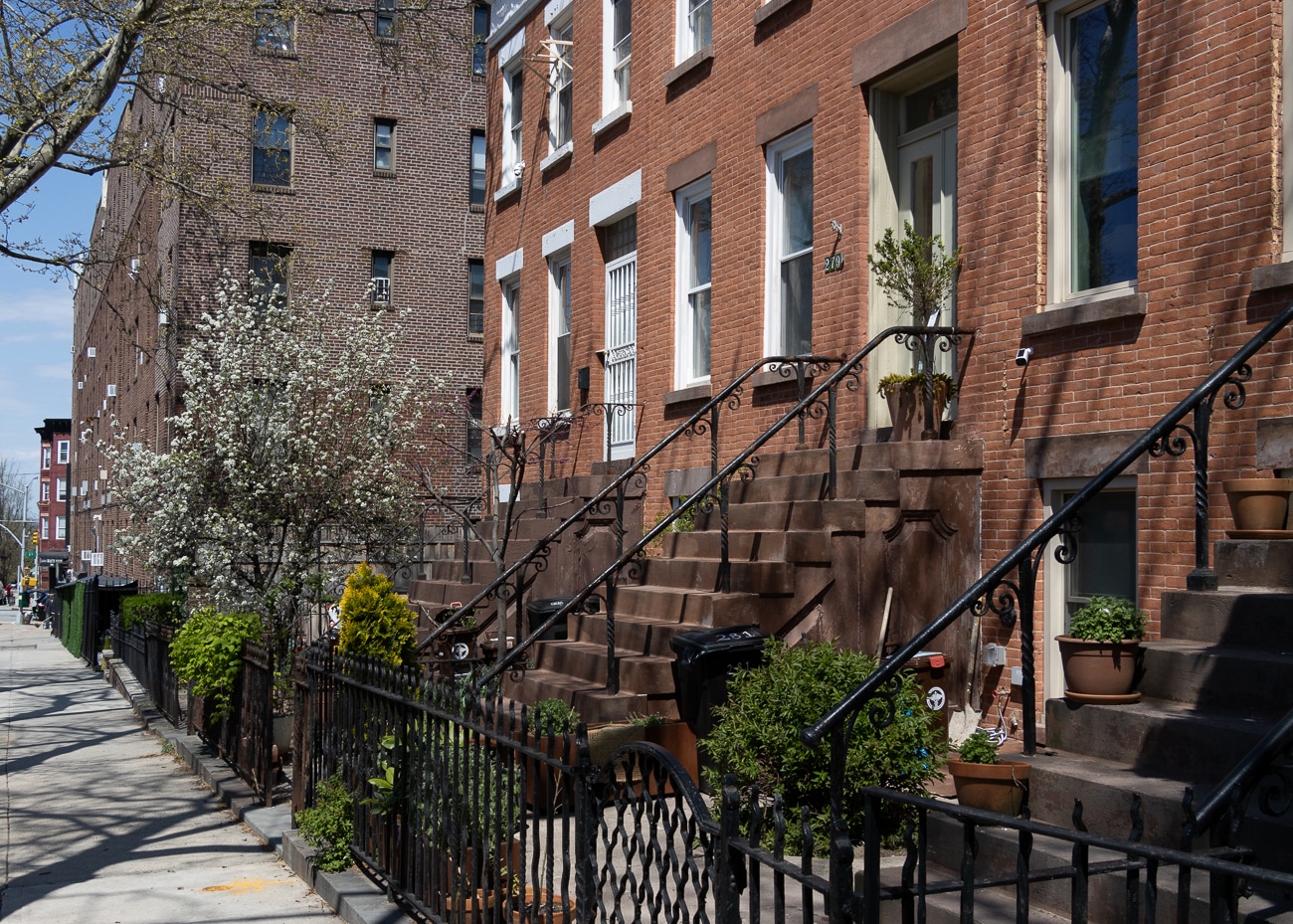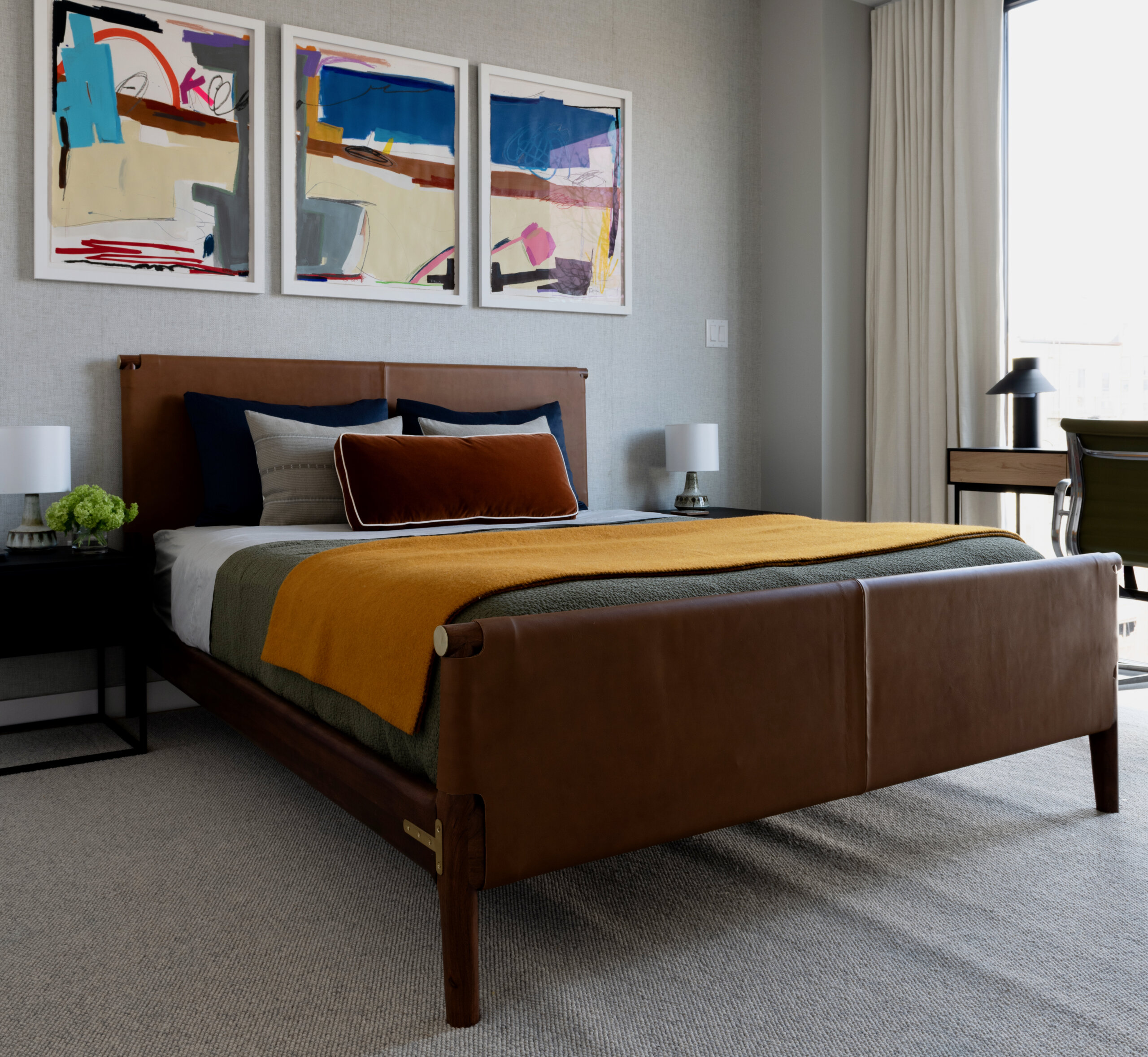Walkabout: Greenpoint’s Edwards Hotel, Part 1
Read Part 2 and Part 3 of this story. Since there have been cities and towns, as well as reasons to travel between them, there has always been the need for a place to house travelers overnight. Inns have come a long way over the centuries, but the needs of the lodger have pretty much…


Read Part 2 and Part 3 of this story.
Since there have been cities and towns, as well as reasons to travel between them, there has always been the need for a place to house travelers overnight. Inns have come a long way over the centuries, but the needs of the lodger have pretty much remained the same: a decent bed and a safe room.
19th century Greenpoint was a busy neighborhood. Several important industries conducted their businesses here, and businessmen, salesmen and people traveling for any number of reasons needed places to stay.
In addition, single men needed housing, and in the days before bachelor apartments were unremarkable, many single men found permanent lodgings in neighborhood hotels. One of the more well-known of these establishments was the Edwards Hotel, located on Manhattan Avenue, near Clay Street, in the heart of Greenpoint’s busy commercial area.
The building had been originally been called the Commercial Travelers Hotel, a pretentious name for a smallish wood framed building at 1109 Manhattan Avenue. In 1879, the building was purchased by Silas Edwards, and renamed the Edwards Hotel.
Aided by his wife, Edwards worked diligently to turn it into Greenpoint’s most famous accommodation. He succeeded admirably; the hotel was usually filled to capacity, was enlarged several times, and even had a postcard.
Hotels can often be the stage for all kinds of plays about the human condition, events of both a tragic and comic nature, and the Edwards Hotel was Greenpoint’s Globe Theater. You never knew what was going to happen there next.
Silas Edwards was an extremely enterprising and hard-working man. He worked tirelessly to make his hotel a classy and respectable place. No one would ever be able to say otherwise, even when they had plenty to say about some of the more interesting things that took place there.
The hotel, like most of the older buildings in the neighborhood, was a rambling set of two and four story wood framed buildings stretching along Manhattan Avenue, at Clay Street.
Guests slept upstairs, and meals were served in a dining room on the ground floor. They would have shared the bathrooms, which were probably in the hall, and each room had a wash basin and a pitcher of water for personal ablutions.
The Edwards Hotel did not have female guests. Respectable women rarely travelled alone in those days, and the hotel catered to single men, many of whom worked at the nearby Crosstown car barns, a major nexus and repair depot for Greenpoint’s many trolley lines.
The working man’s day back then could be twelve or more hours, and many of the single motormen, engineers, and other employees lodged at the hotel. In addition, Edwards was also the only decent hotel in Greenpoint.
While other neighborhoods in Brooklyn supported several establishments, the Edwards Hotel was alone in Greenpoint for many years. Business was very good.
Silas Edwards had a reputation for running a fastidious and organized operation. He told reporters that he didn’t put up with any shenanigans from his guests or his staff.
He was an ardent follower of Mary Baker Eddy’s new church of Christian Science, and believed in spiritualism. By all accounts, he was very devoted to his wife. She was a sturdy woman, hard-working and well able to handle the job of cleaning and running an establishment full of men.
The staff probably lived in fear of both of them. The Edwards’ didn’t put up with any nonsense, so when an incident happened there in 1894, it came as no surprise to the neighbors.
Early one Sunday morning in early December, 1984, the crisp, cold morning was interrupted by the crash of something landing heavily on a roof, followed by screams, and the sound of broken crockery, then silence.
The commotion was so loud it woke up most of the guests in the hotel, as well as the neighbors. One of the guests, a long term lodger with a room on the third floor went out into the hall, and saw Mrs. Edwards, with a look of determined fury on her face, striding briskly down the hall.
He asked, “What’s going on?” She barely looked back at him, but told him, “Nothing. You better go back to bed.”
Next door to the hotel was a saloon run by William Crook and his wife. They had also been awakened by the noise, and had looked out their rear window. They would tell a reporter all about it, a tale Mrs. Crook could barely tell without laughing.
It appears that when they looked out the back window, they saw a young lady lying on their woodshed roof, moaning in pain. Above her, Mr. Edwards was leaning out of the top floor window, throwing pitchers, wash basins and other crockery down on the roof around her.
Edwards never said a word, but just kept tossing the crockery, missing her on purpose. Pieces of pottery flew off the shed roof, as the Crooks watched in amazement.
Finally, two other women came out of the back window by the shed roof, and retrieved their fallen companion. She cried out in pain when they lifted her up, and another man was in the window to help them all in.
After they got the woman off the roof, they closed the window sash, and disappeared from view. Mrs. Crooks recognized the women as diners in the hotel’s restaurant from the night before.
She also recognized the girl on the roof as being Mrs. Edward’s pretty young niece, a recent widow who had been working at the hotel for a number of months.
The story continued, as a man ran into the street from the hotel, and approached a policeman on the corner. He wanted to know where he could get a coach, as he needed to take a young woman with a broken leg to the hospital.
The patrolman offered to go to the call box and get an ambulance, but the man deferred. He just wanted to hire a coach, now. He was given directions to a nearby stable, and soon came back with transportation.
The young lady was packed into the coach, which took off with the gentleman and two ladies, in the direction of the ferry, and disappeared forever. When asked by the patrolman how the woman had broken her leg, the man said only that she had “stuck her leg through the panel of a door.”
Rumor had it that the young widow had made advances to Mr. Edwards, and/or was caught in the middle of some hanky panky with another guest, perhaps the man who hailed the coach and disappeared with her. It was not known if she jumped out of the window, or if Mrs. Edwards threw her out.
Neighbors said Mrs. E. was strong enough to do whatever she needed to do, including breaking down doors, and establishing some order. Amazingly, after the incident, the Crook’s went back to bed, as did everyone else. Just another day in Greenpoint.
Ah, life in the big city hotel. You never know what will happen, or who you will find in your room, even hiding under your bed. Another of the Edwards Hotel guests found out that a stay here could really be an adventure.
This incident happened a few years later, on New Year’s Eve, in the last hours of 1898. Hieron Simonian was an employee of the Neptune Brass Water Meter Company, in Long Island City. He had been a boarder at the hotel for many years. That night, he was getting some well-deserved holiday sleep when he awoke in the middle of the night.
He felt a tickle on his nose, which had awakened him. He turned on his light, but there was nothing on his face, and no one, or nothing untoward in his room. Chalking it up to dust, or his imagination, he turned off the light, and went back to sleep.
A few minutes later, it happened again; a definite tickle, and this time, Simonian woke up fully, jumped out of bed, and went into the hall. He locked his room door, and went to wake up a couple of his neighbors, fellow boarders and friends. They came back to his room, and Simonian was armed with a club, positive that someone was in his room.
The men threw up the covers on the bed and found John Rohr hiding under the bed. He was also a guest at the hotel, and several of the men recognized him as someone they had seen roaming the halls.
Simonian wanted to beat the crap out of him, but his friends convinced him to call the police. They held Rohr until the police came. When the patrolmen arrived, they asked Simonian if anything was missing from his room.
A search came up with a missing penknife and 35 cents in change. A search of Rohr’s pockets turned up both the knife and the money. He also had something else, a vial of some substance that he held in his hand when they searched his pockets.
The police had to fight Rohr to get the substance away from him, which turned out to be a vial of chloroform, and a small American flag handkerchief. The smell was unmistakable.
The detectives figured that Rohr had been attempting to use it to knock the other man out, so that he could more fully search his room, and rob him, but he didn’t know what he was doing, or had hesitated, and that was why Simonian had awakened. The flag handkerchief was a nice touch.
Rohr was arrested, and taken before the magistrate for arraignment. He told the judge that the whole incident was a joke, and he was not trying to rob anyone.
One of the detectives on the case recognized Rohr as the same man he had arrested five years ago for passing bad checks. Rohr had served three years in prison for that offence. They found numerous pawn tickets in his pocket, for clothing and jewelry.
The tickets were from pawn shops all over New Jersey. He had two other pawn tickets for clothing pawned in Greenpoint.
Rohr was arraigned with a thousand dollar bail, which he did not have. It was noted that he had come from a notable and respectable family in Williamsburg, but had been expelled from home for his conduct. He was remanded to jail, the judge not getting the joke, at all.
It certainly was an interesting New Year’s Day for Hieron Simonian, and another interesting chapter in the Edwards Hotel saga. There’s more to come.









What's Your Take? Leave a Comment